Other
How to Hello kitty drawing: A Step-by-Step Guide for Fans of All Ages
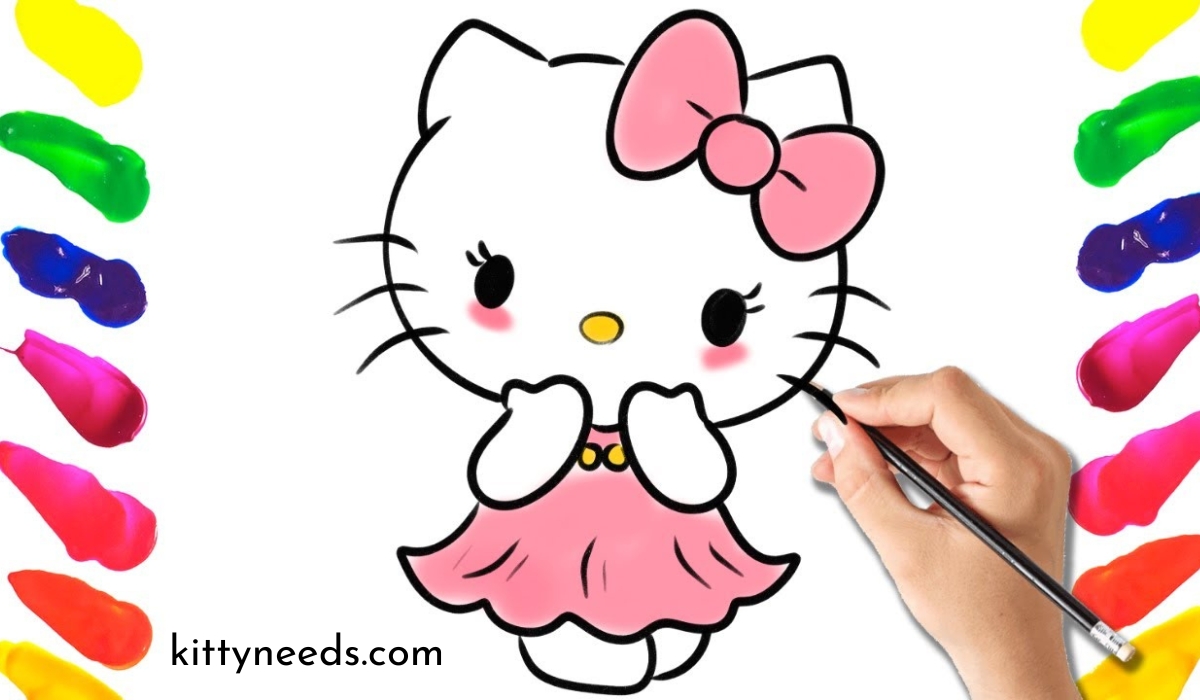
Hello Kitty, the iconic feline who has captured the hearts of people all around the globe, stands as an emblem of cuteness, simplicity, and charm. For Hello Kitty aficionados, there’s something utterly delightful about creating art that embodies the essence of one’s favorite character. Whether you’re a beginner, a parent seeking a fun activity for kids, or a lifelong fan eager to learn a new way to engage with your favorite character, this step-by-step guide will help you draw Hello Kitty like a pro.
An Introduction to Hello kitty drawing
Before we start, it’s essential to understand that drawing Hello Kitty is not just about lines and shapes; it’s an exercise in playfulness and innocence. This guide opts for a simple, straightforward approach to capturing Hello Kitty’s essence with a pencil, an eraser, and the art medium of your choice. We’ll also discuss optional tools that might enhance your drawing experience, including the use of online coloring pages.
Drawing Hello Kitty’s Face Step-by-Step
The first step is to nail Hello Kitty’s unmistakable face. We’ll start with her iconic bow, move on to her head and ears, then capture the eyes, nose, and finally, her sweet little whiskers.
The Bow
Hello Kitty’s bow is a crucial part of her look. Here’s how to start:
Step 1: Begin by drawing a large circle. This circle will be the center of Hello Kitty’s bow.
Step 2: Next, add two medium-length, curved lines, one on either side of the circle. This creates the loops of the bow.
Step 3: Inside the loops, draw two smaller circles for detail. Make sure they’re centered within the larger loop.
The Head
Hello Kitty’s head is a simple, modified oval. Place it to the left of the bow slightly overlapping.
Step 4: Sketch a large, slightly egg-shaped oval that dips on the top. This is Hello Kitty’s head.
The Ears
No Hello Kitty is complete without her ears. They’re just small, rounded triangles:
Step 5: Draw two small, rounded triangles atop her head for her ears.
The Face
The core of Hello Kitty’s features includes her eyes and nose:
Step 6: On the face within the oval, draw two small ovals slightly above the center for her eyes.
Step 7: Between the eyes, add a tiny oval for the nose.
The Whiskers
Hello Kitty wouldn’t be Hello Kitty without her whiskers. Add these playful lines:
Step 8: On each cheek, draw three short lines pointing outward for her whiskers.
Experiment with their length and angle to find the right playful charm for your Hello Kitty.
Drawing Hello Kitty’s Body Step-by-Step
With her face down, it’s time to give Hello Kitty a body, along with a simple dress that is so characteristic of her retro style.
The Torso
Connect Hello Kitty’s head to her lower body with simple lines:
Step 9: From the bottom of her head, draw two slightly curved lines down on either side to create the torso.
Step 10: These lines should resemble an elongated ‘V’ with a gentle, outward curve.
The Dress
Hello Kitty’s dress is a triangle and a line. Keep it sweet and simple:
Step 11: Connect the lower parts of her torso with a horizontal line that serves as the base for her dress.
Final Touches and Coloring
The last part of the drawing guide is to give your Hello Kitty character some depth with subtle shading and to explore a world of vibrant color. This is where Hello Kitty truly comes to life, reflecting your unique artistic flair.
Erasing Guidelines
At this stage, take an eraser and gently remove any guidelines and extra marks you no longer need. This step ensures the focus remains on your charming Hello Kitty creation.
Bringing Hello Kitty to Life with Color
Coloring Hello Kitty is a highly personal endeavor. Whether you prefer colored pencils, markers, or paints, choose colors that resonate with you. Hello Kitty’s classic attire is a white dress, and her bow is typically red, although she’s known for her adaptability to a rainbow of shades.
Adding Details and Background
To truly customize your Hello Kitty, you can add a variety of details, such as flowers, hearts, or her signature apple. For extra flourish, consider adding a background as simple as blue skies or as elaborate as a Hello Kitty-themed scene.
YOU MAY ALSO LIKE
How Often Do You Take A Cat to the Vet? A Guide for Caring Owners
Conclusion – Hello Kitty Drawings That Speak Volumes
By following these simple steps, you’ve unlocked the skill to draw Hello Kitty in her most endearing form. Celebrate your achievement and consider making this a part of your regular creative practice. Remember, practice is key, and each drawing is a step forward in your artistic journey. Whether you’re drawing Hello Kitty for your own enjoyment or sharing the process with a younger artist, this activity is a testament to the shared joy that Hello Kitty continues to bring us.
But the fun doesn’t stop here! Explore further by drawing Hello Kitty in different poses or seasonal outfits. There are countless tutorials and coloring pages available online to keep you inspired and engaged with the wonderful world of Hello Kitty.
Now, grab that pencil and get drawing—your Hello Kitty masterpiece awaits! 🎀
Frequently Asked Questions
What is the easiest way to start drawing Hello Kitty?
The easiest way to start drawing Hello Kitty is by focusing on her most distinctive features first, such as her bow and her round face. Begin with simple shapes like circles for the bow and a slightly egg-shaped oval for the head before adding details like her eyes, nose, and whiskers.
Can I use digital tools to draw Hello Kitty?
Yes, you can absolutely use digital tools to draw Hello Kitty. Many artists and hobbyists enjoy using drawing tablets and software like Adobe Photoshop or Procreate to create digital artwork, including Hello Kitty. These tools also offer the flexibility to experiment with colors and textures easily.
How can I make my Hello Kitty drawing unique?
To make your Hello Kitty drawing unique, consider personalizing her with different expressions, accessories, or outfits. Additionally, adding elements like flowers, hearts, or custom backgrounds can give your artwork a personal touch that reflects your style and creativity.
Where can I find more Hello Kitty drawing tutorials?
A plethora of Hello Kitty drawing tutorials can be found online through art websites, blogs, and video platforms like YouTube. These tutorials range in difficulty from beginner to advanced and often offer step-by-step instructions for various poses and expressions.
Is it okay for adults to enjoy drawing Hello Kitty?
Absolutely, it’s perfectly okay for adults to enjoy drawing Hello Kitty! Artistic expression knows no age limit, and Hello Kitty, with her timeless charm and simplicity, appeals to fans of all ages. Drawing Hello Kitty can be a relaxing and rewarding activity, regardless of one’s age.
Pets and Animals
How Much Do Bearded Dragons Cost? Your Comprehensive Guide
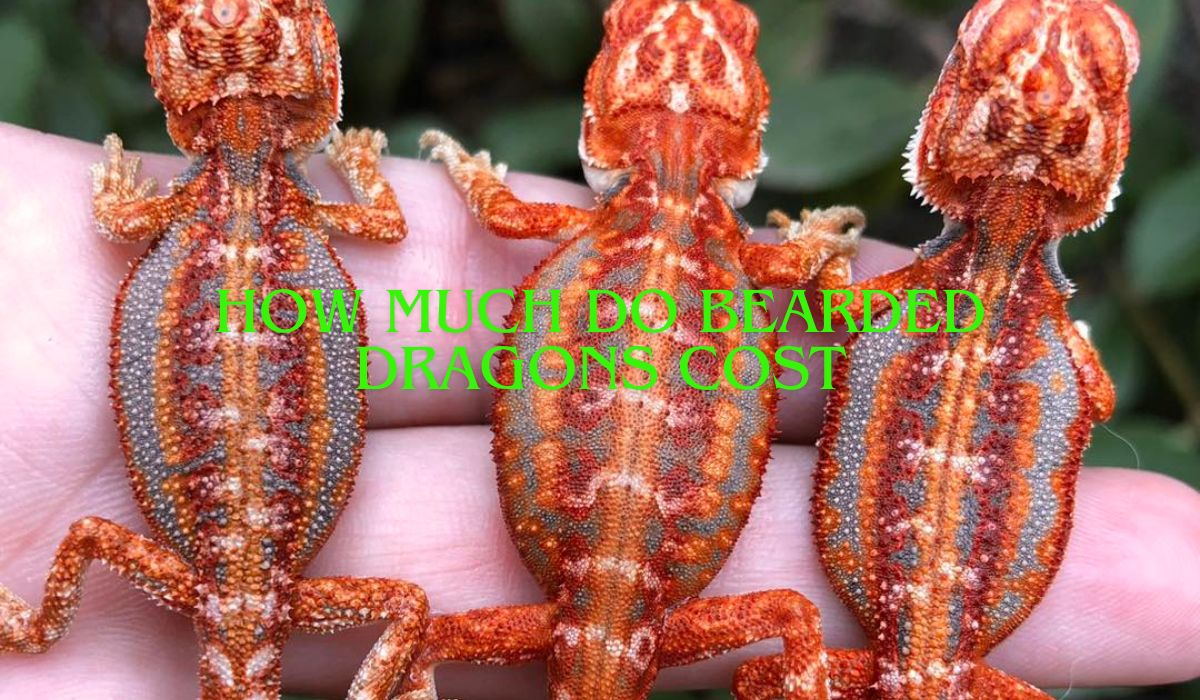
Introduction:
Bearded dragons are fascinating reptiles that have gained popularity as pets due to their docile nature and unique appearance. If you’re considering adding one of these scaly companions to your family, one of the first questions you may have is, “How much do bearded dragons cost?” In this comprehensive guide, we’ll delve into all the factors that contribute to the cost of owning a bearded dragon, from initial setup expenses to long-term care costs.
Chapter 1: Initial Purchase Price
When it comes to buying a bearded dragon, the cost can vary depending on factors such as age, morph, and where you purchase them from. Here’s a breakdown of what you can expect to pay:
- Hatchlings: Baby bearded dragons, or hatchlings, are typically the least expensive option, ranging from $20 to $100. However, keep in mind that younger dragons may require more specialized care.
- Juveniles: Juvenile bearded dragons, between 2 to 4 months old, may cost between $50 to $200, depending on their size and coloration.
- Adults: Adult bearded dragons, over a year old, can range from $100 to $500 or more, with factors such as gender, size, and color influencing the price.
- Morphs: Bearded dragons come in a variety of morphs, which are variations in color and pattern. Rare or high-demand morphs can fetch prices upwards of $1,000 or more.
Chapter 2: Habitat Setup Costs
Creating the perfect habitat for your bearded dragon is essential for their health and well-being. Here’s what you’ll need to consider in terms of setup costs:
- Enclosure: A suitable enclosure for a bearded dragon can range from $50 for a basic tank to $500 or more for a custom-built vivarium.
- Heating and Lighting: Proper heating and lighting are crucial for maintaining the right temperature and providing UVB exposure. Expect to spend around $50 to $200 on heat lamps, UVB bulbs, and fixtures.
- Substrate and Decor: Substrate, such as reptile carpet or tile, and decor items like rocks, branches, and hides, can add another $20 to $100 to your setup costs.
- Thermometers and Hygrometers: Accurate temperature and humidity monitoring are essential. Plan to spend around $20 to $50 on quality thermometers and hygrometers.
Chapter 3: Ongoing Care Expenses
Once you’ve set up your bearded dragon’s habitat, there are ongoing expenses to consider for their care and maintenance:
- Food: Bearded dragons require a varied diet consisting of live insects, fruits, and vegetables. Depending on the size of your dragon and the quality of the food, expect to spend around $20 to $50 per month on food.
- Veterinary Care: Routine veterinary check-ups and potential medical expenses should be factored into your budget. While the cost can vary, budgeting around $100 to $300 per year for vet expenses is a good starting point.
- Substrate Replacement: Substrate will need to be replaced regularly to maintain cleanliness and hygiene in your dragon’s enclosure. Budget around $20 to $50 per month for substrate replacement.
- Supplements: Calcium and vitamin supplements are essential for bearded dragons’ health. Plan to spend around $10 to $20 per month on supplements.
Chapter 4: Additional Expenses
In addition to the essential costs mentioned above, there are other potential expenses to consider:
- Enclosure Upgrades: As your bearded dragon grows, you may need to upgrade their enclosure to accommodate their size. Budget for potential enclosure upgrades down the line.
- Accessories: Additional accessories such as basking platforms, climbing structures, and enrichment toys can enhance your dragon’s habitat but will add to your expenses.
- Travel Costs: If you need to travel with your bearded dragon or board them while you’re away, factor in these additional expenses.
- You may also like: Revealing the Enigma of Ovestæ: Delving into the Secrets Behind This Intriguing Locale
Conclusion
While the initial cost of purchasing a bearded dragon may vary depending on factors such as age and morph, it’s essential to consider the ongoing expenses associated with their care and maintenance. By budgeting for both the upfront and long-term costs, you can ensure that you provide your scaly friend with the best possible care without breaking the bank. So, if you’re ready to embark on the journey of owning a bearded dragon, remember to plan ahead and budget accordingly for a rewarding and fulfilling experience.
FAQS
- How much does a bearded dragon cost?
- The cost of a bearded dragon can vary depending on factors such as age, morph, and where you purchase them from. Hatchlings may range from $20 to $100, juveniles from $50 to $200, and adults from $100 to $500 or more. Rare morphs can fetch prices upwards of $1,000.
- What is the average setup cost for a bearded dragon habitat?
- The average setup cost for a bearded dragon habitat includes the enclosure, heating and lighting equipment, substrate, decor, and monitoring tools. Expect to spend between $200 to $800 or more depending on the size and complexity of the setup.
- How much do bearded dragon owners spend on food monthly?
- Bearded dragon owners typically spend around $20 to $50 per month on food for their pets. This includes live insects, fruits, and vegetables to provide a balanced diet for their reptile companions.
- What are the ongoing care expenses for bearded dragons?
- Ongoing care expenses for bearded dragons include food, veterinary care, substrate replacement, and supplements. Budgeting around $100 to $300 per year for vet expenses and $20 to $50 per month for food and substrate replacement is recommended.
- Are there any additional expenses associated with owning a bearded dragon?
- Yes, there can be additional expenses associated with owning a bearded dragon. These may include enclosure upgrades as the dragon grows, purchasing accessories such as basking platforms and enrichment toys, and potential travel costs if you need to transport or board your pet.
Pets and Animals
How Many Legs Does a Caterpillar Have? Unveiling the Mysteries of Lepidoptera Locomotion
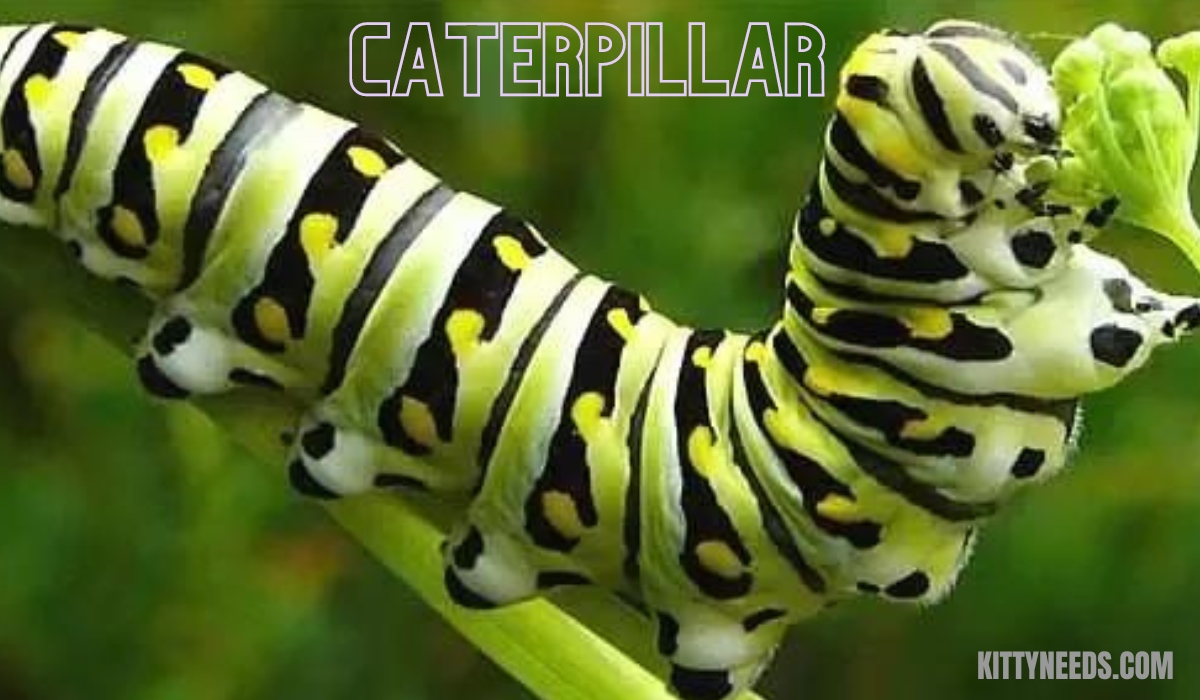
How Many Legs Does A Caterpillar Have
Caterpillars are some of nature’s most remarkable creatures, known for their unique and intriguing features. A common question among those fascinated by these larval forms of butterflies and moths is, “How many legs does a caterpillar have?” The answer is not as straightforward as one might think, and to fully understand, we must explore the fine details of caterpillar anatomy and behavior. If you’re a science educator or a nature enthusiast looking to deepen your understanding of caterpillars, read on as we dissect this intriguing insect mystery.
A Caterpillar’s Unique Journey to Adulthood
Before we focus on their legs, it’s important to realize the larger context of caterpillars in nature. These larvae are the feeding and growth stage of the Lepidoptera order, which includes more than 180,000 species. The transformation from a seemingly multiple-legged creature to a winged butterfly or moth is a story that evokes wonder and awe, making it a perennial favorite of insect tales.
But the story begins with the soggy, wiggling form of a caterpillar, sometimes misinterpreted due to its numerous short, stumpy legs that seem to cover its entire underside.
True Legs vs. Prolegs: The Legitimate Distinction
While it may appear that a caterpillar has dozens of legs due to its segmented body, the reality is more structural than it is in sheer numbers. All insects, including caterpillars, have what’s referred to as “true legs,” which are jointed and, in the case of caterpillars, there are six of them. These true legs help the caterpillar move about and are located on the thoracic segments.
In addition to the six true legs, caterpillars have prolegs. Unlike true legs, prolegs are not true jointed legs but rather fleshy, stubby appendages used primarily for gripping surfaces and providing additional body support. Most caterpillars have up to five pairs of prolegs on their abdomen, though this can vary among different species.
The distinction between true legs and prolegs is crucial in understanding a caterpillar’s locomotion and general functionality.
Decoding the Number Game: How Many Legs in Total?
When you tally the true legs and prolegs of a caterpillar, you end up with up to six true legs and a varying number of prolegs, depending on the species. However, if we talk about “legs” in the broader sense of locomotion appendages, caterpillars can have anywhere from 10 to 16 “legs” in total, when considering both types of appendages.
This range in leg count can lead to the confusion surrounding caterpillar anatomy, with different sources sometimes counting only the true legs or including all the prolegs in the total count.
Legwork in Caterpillar Locomotion
True legs are used for walking, which is quite an active part of a caterpillar’s day, considering how much they eat and the need to find new food sources constantly. Caterpillars move in a distinctive “looping” gait using their true legs, arching their back and then elongating their body to be pushed forward.
Prolegs, on the other hand, are not true legs but are very important in a caterpillar’s movement nonetheless. They are key to a caterpillar’s gripping ability, which is especially crucial when hanging upside down to molt or forming a chrysalis. Prolegs also help caterpillars move in a wave-like pattern—grasping with the front legs, then with the middle, and so on—providing a smooth way to glom about foliage without falling prey to gravity’s pull.
YOU MAY ALSO LIKE
What is Qxefv? A Complete Guide to Caring for Your Exotic Companion
The Bottom Line on Caterpillar Limbs
In conclusion, a caterpillar’s leg count is somewhat ambiguous depending on the method of counting. But if we’re to include both true legs and prolegs, the answer is somewhere between 10 and 16, though 16 will be the most accurate count when all prolegs are present.
Understanding the intricacies of a caterpillar’s legs is essential in appreciating the mechanics of their daily activities, from munching on leaves to preparing for the chrysalis stage. The next time you come across one of these remarkable creatures, watch their legwork in action, and you’ll have a new appreciation for the beautiful and complex world of Lepidoptera.
It is from this humble beginning, with however many legs, that the metamorphosis sets in, eventually gifting the world with the breathtaking visual poetry of butterflies and moths in flight.
FAQs
1. How can you tell the difference between true legs and prolegs on a caterpillar?
True legs on a caterpillar are jointed and located on the thoracic segments, close to the head. They resemble more traditional insect legs and are only six in number. In contrast, prolegs are fleshy, non-jointed appendages found on the abdomen of the caterpillar, and a caterpillar can have up to five pairs of these.
2. Why do caterpillars have prolegs?
Prolegs assist caterpillars in gripping onto surfaces and provide additional support to their bodies. This is particularly crucial for navigation on foliage and during the hanging phase of transforming into a chrysalis. They enable caterpillars to move smoothly in a wave-like motion, ensuring they can reach new food sources efficiently and hang securely when required.
3. Do all caterpillars have the same number of legs?
No, the number of prolegs a caterpillar has can vary among different species, which means that not all caterpillars will have the same total number of legs. However, all caterpillars have six true legs, but when accounting for prolegs, the total can range from 10 to 16 legs.
4. How do caterpillars use their legs to move?
Caterpillars exhibit a distinctive “looping” gait for movement. They use their true legs for walking and prolegs for gripping. The movement involves arching their back to bring the rear prolegs closer to the true legs and then elongating their body forward, effectively propelling them in a rhythmic pattern.
5. What happens to caterpillar legs during metamorphosis?
During the metamorphosis from a caterpillar to a butterfly or moth, the structure of their legs changes. The six true legs remain and develop into the legs of the adult butterfly or moth, consistent with the typical insect body plan. The prolegs, however, do not persist into adulthood; they are lost as the caterpillar transforms into a chrysalis and eventually emerges as a fully winged adult.
Pets and Animals
What is Qxefv? A Complete Guide to Caring for Your Exotic Companion
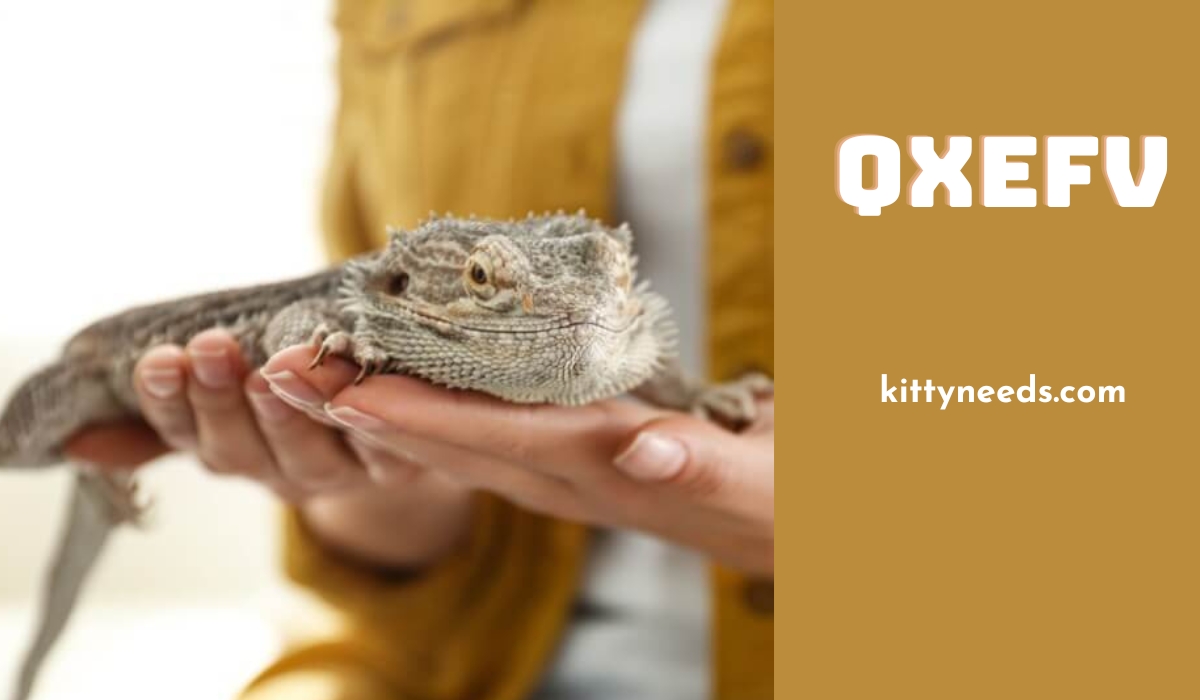
Welcome to the complete guide on caring for a rather unusual yet fascinating pet—the Qxefv. For those who revel in the idea of tending to a unique creature, the Qxefv, sometimes known as the ‘rainbow-tailed dart lizard’, is an enticing prospect. This comprehensive blog post is designed to acquaint potential Qxefv owners with everything they need to know to ensure the comfort and well-being of their new scaled friend. From setting up the perfect habitat to understanding the intricacies of their health, we’ll cover how to be the ideal companion to this captivating reptile.
Chapter 1: An Introduction to the Qxefv
The Qxefv is a miniature lizard with a big heart, hailing from the deep rainforests of a far-off land. Its vivid coloring and small stature often take center stage in pet enthusiast communities, making it a sought-after addition to homes where an affinity for the exotic reigns. This guide is tailored to those with a passion for pets that are out of the ordinary.
Chapter 2: Unraveling the Origins and Habitat of Qxefv
To properly care for a Qxefv, one must understand its origins and the habitat it evolved within. For the Qxefv, this is the lush, dense canopy of the deep rainforests, a humid and warm ecosystem. We’ll explore how to mimic these crucial conditions in your home environment, the concept of environmental enrichment, and more.
Chapter 3: Care and Maintenance of Your Qxefv
This chapter is an actionable guide to the optimal care and maintenance of your Qxefv. From temperature control to creating a safe and engaging habitat, we’ll provide all the necessary information to ensure that your Qxefv remains healthy and happy in its new environment.
Chapter 4: Prioritizing the Health and Wellness of Your Qxefv
Prevention is key when it comes to the health of your Qxefv. We’ll cover regular health checks, common health issues, nutritional needs, and safe handling practices in this important section.
Chapter 5: Integrating Qxefv into Your Home and Lifestyle
Would Qxefv thrive in your space? We’ll discuss the nuances of Qxefv compatibility with family life and other pets, and provide valuable insights into creating an environment that fosters positive interaction and continued well-being for your unique companion.
Chapter 6: Navigating Legalities and Ethical Ownership
Owning a Qxefv comes with certain responsibilities in terms of legality and ethical considerations. This section will address regulations on pet ownership, breeding, and importation of Qxefv, ensuring your love for this exotic pet is in line with local guidelines and responsible pet stewardship.
Chapter 7: The Qxefv Conclusion and Beyond
To wrap up, this comprehensive guide will summarize the unique features and care requirements of the Qxefv. We will also underscore the importance of considering this pet as a commitment and an enchanting addition to your life for years to come.
It’s time to step into the extraordinary world of Qxefv care. Whether you’re planning to bring home your first or you’re a seasoned owner seeking new insights, this guide is your roadmap to a more enriched and informed experience with the charming and enigmatic Qxefv. Now, without further ado, it’s time to unveil the secrets to caring for a pet like no other.
YOU MAY ALSO LIKE
Finding the Perfect Pet Shop: A Guide to “Pet Shop Terdekat”
Frequently Asked Questions (FAQs)
What is the ideal temperature range for a Qxefv habitat?
The ideal temperature range for a Qxefv habitat should mimic the warm, humid conditions of its native rainforest. This means maintaining an ambient temperature between 75°F and 85°F (24°C to 29°C) during the day, with a slight drop at night to mimic natural conditions, ensuring the comfort of your Qxefv.
How often should I feed my Qxefv, and what is their preferred diet?
Qxefvs should be fed daily with a diet consisting of small insects like crickets, fruit flies, and occasionally small mealworms. It’s crucial to ensure the insects are gut-loaded (fed nutritious food) to provide the proper nutrients to your Qxefv. Also, a variety of fresh, safe fruits in small amounts can be offered to supplement their diet.
Can Qxefvs cohabit with other pets?
Qxefvs are generally solitary and may stress easily in the presence of other pets, especially larger animals. If you have other pets, it’s essential to provide a quiet, secure location for your Qxefv’s habitat away from high-traffic areas. Observing your Qxefv’s behavior and adjusting as needed is key to ensuring a peaceful cohabitation.
How do I ensure my Qxefv’s habitat maintains the proper humidity?
Maintaining proper humidity levels, between 70% to 80%, is crucial for a Qxefv’s health. This can be achieved by daily misting of their habitat with water and incorporating live plants and a substrate that retains moisture. Monitoring with a reliable hygrometer will help you keep the habitat within the ideal humidity range.
Is it legal to own a Qxefv in all regions?
Ownership laws for exotic pets like the Qxefv vary widely by region and country. It’s essential to research and comply with local wildlife and exotic pet regulations before attempting to acquire a Qxefv. This ensures your petkeeping is both legal and ethical, safeguarding the well-being of your Qxefv and supporting conservation efforts for their species.
-

 Pets and Animals7 months ago
Pets and Animals7 months agoShovel Dog: Everything You Need to Know
-
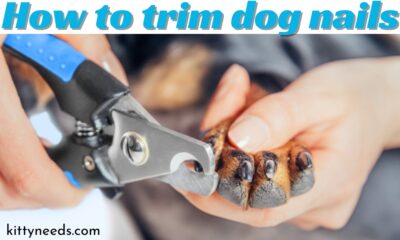
 Pets and Animals7 months ago
Pets and Animals7 months agoHow To Trim Dog Nails: A Step-by-Step Guide for Painless Pups and Peace of Mind
-

 Pet Care Guides7 months ago
Pet Care Guides7 months agoGive a Loving Home: Adopt a Pet, Change a Life with Pet finder
-
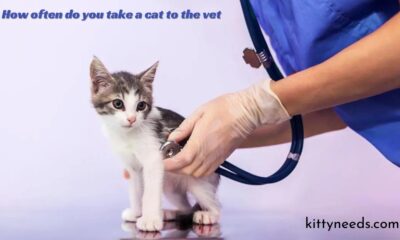
 Pets and Animals7 months ago
Pets and Animals7 months agoHow Often Do You Take A Cat to the Vet? A Guide for Caring Owners
-
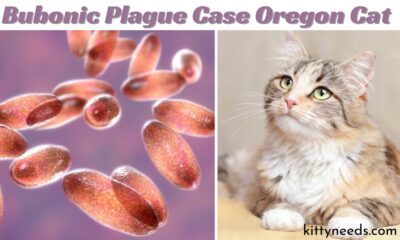
 Pets and Animals7 months ago
Pets and Animals7 months agoBubonic Plague case oregon cat: A Modern Tale of Medieval Disease
-

 Pet Care Guides7 months ago
Pet Care Guides7 months agoThe Definitive Guide to Rimadyl Carprofen Dogs: Uses, Dosage, and Safety
-
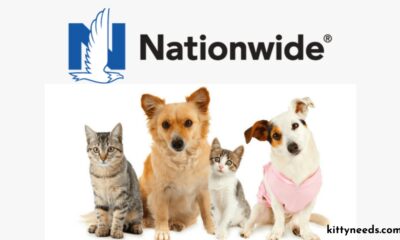
 Pet Care Guides7 months ago
Pet Care Guides7 months agoHere’s Why Nationwide Pet Insurance Should Be on Your Radar
-
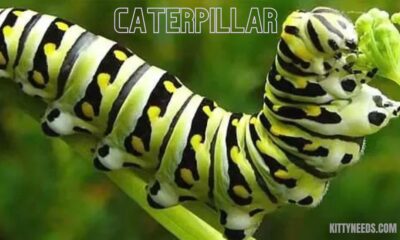
 Pets and Animals7 months ago
Pets and Animals7 months agoHow Many Legs Does a Caterpillar Have? Unveiling the Mysteries of Lepidoptera Locomotion
